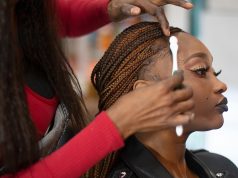 There’s nothing quite like the face of a child unwrapping their gifts on Christmas morning. Whether it’s a new bike or a favorite doll, toys are on every child’s wish list. As parents, we have just as much fun shopping for the perfect gift! But before you run to the toy store, you’ll want to be sure the toys you buy are safe for your child. Every year thousands of children are treated in hospital emergency rooms for toy related injuries.
There’s nothing quite like the face of a child unwrapping their gifts on Christmas morning. Whether it’s a new bike or a favorite doll, toys are on every child’s wish list. As parents, we have just as much fun shopping for the perfect gift! But before you run to the toy store, you’ll want to be sure the toys you buy are safe for your child. Every year thousands of children are treated in hospital emergency rooms for toy related injuries.
In order to keep kids safe, you should always ask yourself:
1 – Is this toy safe?
Choking is a particular risk for children three and younger, because they tend to put objects in their mouths. Dr. Terri Coco is an emergency room physician at Children’s of Alabama and an injury prevention expert. She says a good rule of thumb when shopping for younger children, is to see if any pieces of the toy can fit into the tube of a roll of toilet paper. If so, then that toy is a choking hazard. She also points out that even small pieces that are attached to the toy can break off and become a choking hazard for a small child.
Avoid toys with:
• Small parts
• Sharp edges
• Gears
• Exposed wires
• Hinges
• Long strings
• Magnets
• Small batteries
2 – Is this toy developmentally appropriate for my child?
Dr. Coco also suggests parents only purchase age appropriate toys for their children. For instance, a bottle of bubbles or a paint set may be fun for an older child to play with, but each could be dangerous if consumed by a younger child. Be sure to read the labels on game and toys and adhere to the age recommendations listed.
3 – Is this toy age appropriate for my child?
The U.S. Consumer Product Safety Commission (CPSC) closely monitors and regulates toys. Any toys made in, or imported into the United States after 1995 must comply with CPSC standards. Remember parental supervision is always key around small children. Be careful that younger siblings don’t have access to toys belonging to their big brother or big sister.
Tips for parents with infants, toddlers and preschoolers:
• Make sure toys are large enough that they can’t be swallowed (use the toilet paper roll test to be sure).
• Toys should have soft, smooth edges and no sharp points. Toys should be safe enough to withstand chewing.
• No strings
• Avoid toys with batteries
By keeping these tips in mind, you can ensure the toys found under your tree will be safe and bring years of enjoyment to your child. For the latest information on toy recalls, check the CPSC website at www.cpsc.gov.
For more information on this or other health and safety topics, visit www.childrensal.org.



